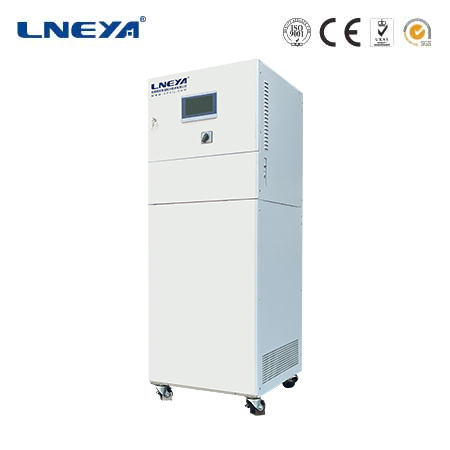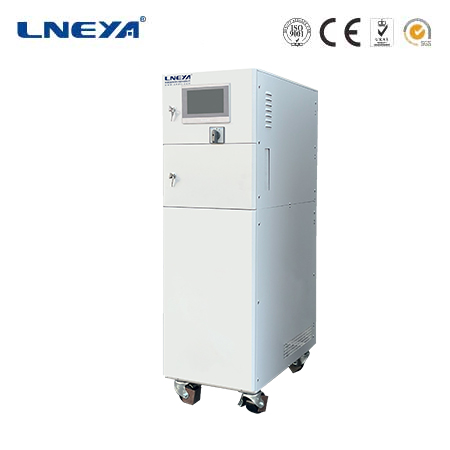air cooled chiller working
Air Cooled Chiller Working
An air-cooled chiller is a crucial piece of equipment in the field of refrigeration and cooling, widely used in various applications such as commercial buildings, industrial processes, and data centers. Its primary function is to remove heat from a substance, typically a liquid, and transfer that heat to the ambient air, thereby providing a cooling effect.

Key Components of an Air-Cooled Chiller
Compressor: The compressor is the starting point and a vital component of the air-cooled chiller’s operation. It is responsible for taking in low-pressure, low-temperature refrigerant vapor from the evaporator. Through a mechanical process, the compressor increases the pressure and temperature of this refrigerant vapor. This compression is essential as it raises the energy level of the refrigerant, making it suitable for the subsequent heat transfer processes. Compressors in air-cooled chillers can be of different types, such as reciprocating, scroll, or centrifugal compressors, each with its own advantages in terms of efficiency, capacity, and noise level.
Condenser: After the refrigerant vapor leaves the compressor in a high-pressure, high-temperature state, it enters the condenser. The condenser is a heat exchanger that plays a pivotal role in the heat rejection process. In an air-cooled chiller, fans are used to blow ambient air over the condenser coils. As the hot refrigerant passes through these coils, heat is transferred from the refrigerant to the air. The transfer of heat causes the refrigerant to condense from a vapor into a liquid. The fins on the condenser coils increase the surface area, enhancing the efficiency of heat transfer between the refrigerant and the air. Once the refrigerant has condensed, it is in a high-pressure liquid state and ready for the next stage of the cycle.

Expansion Valve: The high-pressure liquid refrigerant from the condenser then flows through the expansion valve. This valve is a critical component that regulates the flow of the refrigerant and reduces its pressure. When the refrigerant passes through the expansion valve, the sudden drop in pressure causes it to flash into a mixture of liquid and vapor. This expansion also results in a significant decrease in the temperature of the refrigerant. The expansion valve controls the amount of refrigerant that enters the evaporator, ensuring a proper balance between the refrigerant flow and the cooling demand.
Evaporator: The mixture of liquid and vapor refrigerant enters the evaporator. Inside the evaporator, the refrigerant absorbs heat from the substance that needs to be cooled, such as chilled water in a building’s cooling system or air in an industrial process. As the refrigerant absorbs heat, the remaining liquid refrigerant vaporizes. This vaporization process requires energy, which is obtained from the substance being cooled, thus producing a cooling effect. The resulting low-pressure refrigerant vapor is then drawn back into the compressor to start the cycle anew.
The Refrigeration Cycle of an Air-Cooled Chiller
Compression Process: As mentioned earlier, the compressor initiates the cycle by compressing the low-pressure refrigerant vapor. This process is adiabatic (assuming minimal heat transfer to the surroundings during compression), and the work done by the compressor increases the internal energy of the refrigerant, raising its pressure and temperature.
Condensation Process: The high-pressure, high-temperature refrigerant vapor enters the condenser, where heat transfer occurs between the refrigerant and the ambient air. The air, blown by the fans over the condenser coils, absorbs the heat from the refrigerant, causing the refrigerant to change from a vapor to a liquid state. This is a heat rejection process that releases the heat absorbed from the substance being cooled to the environment.

Expansion Process: The high-pressure liquid refrigerant passes through the expansion valve, where the pressure drop causes it to partially vaporize and cool down. This expansion is an isenthalpic process (constant enthalpy), and the resulting low-temperature, low-pressure mixture of liquid and vapor is ready for the next stage.
Evaporation Process: In the evaporator, the low-temperature, low-pressure refrigerant mixture absorbs heat from the substance to be cooled. As the heat is absorbed, the liquid refrigerant vaporizes, and the resulting low-pressure vapor is returned to the compressor. This evaporation process is the cooling stage of the cycle, where the desired cooling effect is achieved.
The Role of Refrigerant and Air
The refrigerant is the medium that undergoes phase changes throughout the cycle, enabling the transfer of heat. Different refrigerants have different properties, such as boiling points, heat transfer coefficients, and environmental impacts. The choice of refrigerant depends on various factors, including the application requirements, efficiency considerations, and environmental regulations.
Air, on the other hand, serves as the heat sink for the air-cooled chiller. The fans in the condenser are responsible for ensuring a continuous flow of air over the condenser coils. This airflow is essential for effective heat transfer from the refrigerant to the air. If the airflow is restricted, for example, due to dust accumulation on the coils or improper installation, the performance of the chiller will be negatively affected, leading to reduced cooling capacity and potentially higher energy consumption.
In conclusion, the working of an air-cooled chiller is a complex yet highly efficient process that relies on the coordinated operation of its components and the principles of thermodynamics. By understanding how each part functions and how they interact within the refrigeration cycle, one can better appreciate the ability of air-cooled chillers to provide effective cooling for a wide range of applications.
Related recommendations
chilling unit operation
220Chilling Unit Operation: A Definitive GuideIn the domain of thermal management, chilling units serve as the cornerstone for maintaining optimal temperatures in a plethora of settings, ranging fro...
View details40 ton chiller
555Understanding 40-Ton Chillers A 40-ton chiller is an industrial-scale cooling system capable of removing 40 tons of heat per hour, equivalent to 115,200 BTUs (British Thermal Units) or approxim...
View detailschilled water chiller
358Chilled Water Chiller Systems: Efficiency and Innovation in HVAC Cooling Chilled water chiller systems are an essential part of modern heating, ventilation, and air conditioning (HVAC) technolo...
View detailschiller units
236IntroductionChiller units are essential pieces of equipment in the realm of cooling systems. They are designed to remove heat from a fluid (usually water or a refrigerant - based solution) and tr...
View details
 LNEYA Thermal Test Chillers
LNEYA Thermal Test Chillers





HelloPlease log in